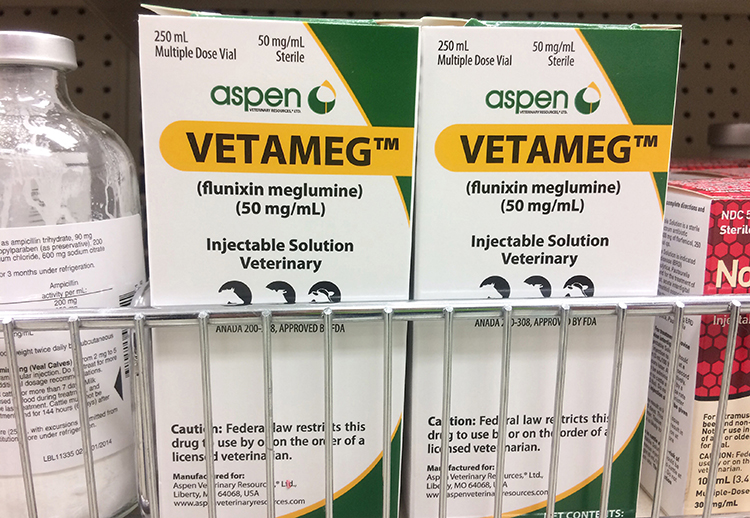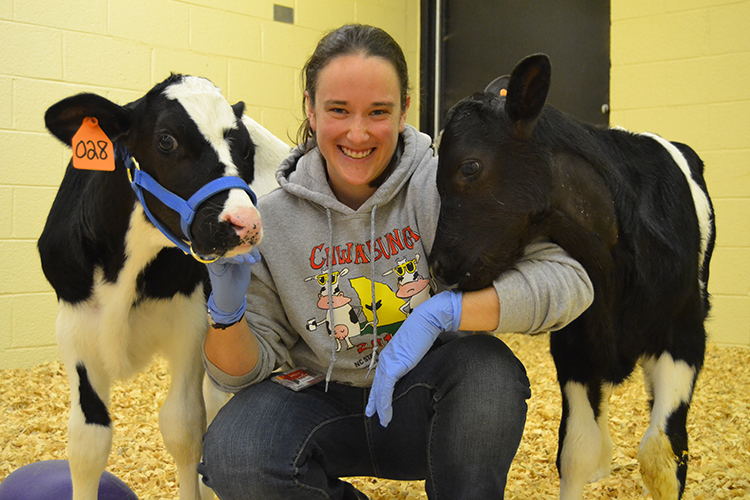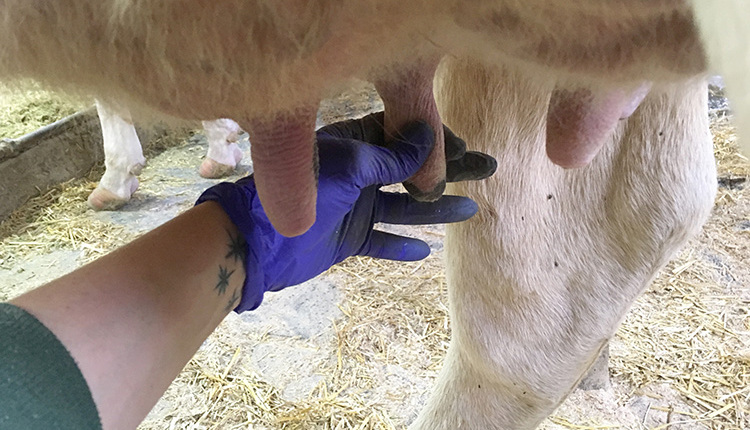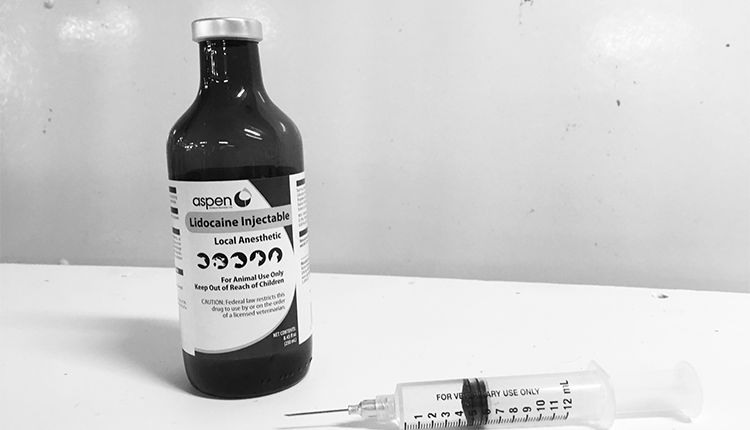
“What?” I asked, not wanting to believe what she said and half hoping that I hadn’t heard her right.
Flunixin meglumine is one of the most important veterinary medications we use to reduce pain when our dairy cows are ill. For you nonfarmers, flunixin is basically the same as ibuprofen – it’s a nonsteroidal, anti-inflammatory medication that reduces fever and relieves pain. Flunixin is sold under the brand name Banamine, but we use a generic formulation.
On our farm, we rely on flunixin to help cows and calves feel better when they’re ill. Oftentimes, when we help a cow feel better with flunixin and other supportive therapies, we can reduce the duration of her illness and even avoid using antibiotics at times. We also use flunixin to manage pain during procedures like surgery and dehorning.
Not having flunixin available to help our cows is unthinkable.
I expressed my frustration to Emily, who is our pharmacy tech and also a good friend. She explained that manufacturers couldn’t get one of of the ingredients used to make generic flunixin, so production was on hold until they could find a new supply. Brand-name Banamine was still available, but the shortage of generic flunixin had raised demand for Banamine and now that was in short supply as well.
The most frustrating part of the situation is that there are no comparable products available to replace flunixin. If a vaccine or antibiotic is on backorder, there are multiple other products we can use instead.
So, why aren’t there more pain relief medications available for cattle?

I sent this question to my friend Danielle Myzk. Danielle is a D.V.M./PhD dual degree student at North Carolina State University College of Veterinary Medicine studying ruminant pharmacology and large animal medicine.
First, Danielle reminded me that there are no FDA-approved drugs for the treatment of pain in food producing animals. When veterinarians administer or prescribe flunixin for the treatment of pain, they’re doing so in an extra-label manner.
“A major reason for the lack of approved food animal analgesics is that there are no validated methods for evaluating pain responses in food animals,” Danielle shared with me. “For an analgesic to be FDA-approved, it has to undergo studies showing it is safe and effective. However, because no valid methods to measure food animal pain are available, the studies needed to show the analgesic actually controls pain are difficult to design.”
“Significant contributions to pain recognition research and drugs to alleviate pain in food producing species has been made by Hans Coetzee, D.V.M. and his group at Iowa State University,” Danielle added. “These studies have made great strides in understanding this very important field, including knowledge of pain management during illnesses and procedures.”
Luckily, we didn’t have to wait long before Emily called to say she had a bottle of flunixin for us. A couple weeks later she said the flunixin shortage seemed to be resolved altogether.
Clearly, though, this is an area where continued research and development is necessary. Dairy farmers need additional options for reducing fever and relieving pain in dairy cattle.

The author is a dairy farmer and writer from central Minnesota. She farms with her husband, Glen, and their three children. Sadie grew up on a dairy farm in northern Minnesota and graduated from the University of Minnesota with a degree in agricultural communications and marketing. She also blogs at Dairy Good Life.








